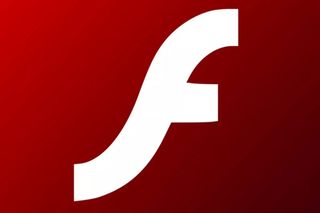The Adobe Flash nightmare on Windows 10 is finally coming to an end
The Adobe Wink nightmare on Windows 10 is finally coming to an end

In April 2010 Steve Jobs wrote a blog postal service that systematically took Adobe Flash down a peg or two. In 1 of the best CEO quotes of all time he said, "We also know outset hand that Flash is the number 1 reason Macs crash. We have been working with Adobe to fix these problems, but they have persisted for several years now. Nosotros don't want to reduce the reliability and security of our iPhones, iPods and iPads by calculation Flash." Big oof there, mayhap the biggest oof of all time?
Virtually exactly 11 years later on and Microsoft is finally excising Adobe Flash from Windows 10. A move which follows Adobe announcing that Wink had reached end of life back in December 2020.
- We've rounded up the best laptops of 2021 if yours needs an upgrade
- Have a look at our communication for picking the best iPhone
- Plus: Microsoft Border challenges Chrome with a big productivity upgrade
Microsoft volition remove Flash via an update KB4577586 which volition roll out in June 2021, co-ordinate to the company's web log mail. Not merely volition Flash exist pulled from Windows 10, it will also be unceremoniously ejected from Windows 8.one, Server 2012 and Windows eight Embedded through security-only updates.
Anyone updating to Windows' big update, 21H1, will also find that information technology contains absolutely no Flash whatever. Microsoft says you can remove information technology whatever time by manually applying KB4577586, which you lot tin can download from its Catalog.
While Adobe Wink has become a betoken of some ridicule, information technology's perhaps worth remember what it did bring to the internet back in the early 2000s. Flash was a lightweight, bandwidth sipping, way of introducing considerable interactivity online. Everything from blithe series to games used Flash to bring some life to a mostly pre-rendered internet.
Flash followed in the footsteps of products similar Macromedia Manager, which delivered interactivity on CD ROM and other platforms where bandwidth wasn't an consequence. In the early 2000s, Wink was already starting to proceeds traction as a replacement for Manager. Information technology was far more capable of delivering lightweight vector graphics online, which was great for lossless graphics which scaled well to near any device or screen.
Later on, Flash became the de facto standard in web video delivery. It was only ever a container though, which made information technology a proprietary way to view video that was encoded using codecs similar Sorenson Spark or VP6. Later, Adobe added h.264, commonly referred to as MP4 video support, which was a much more prevalent standard. It meant anyone producing Flash video could too evangelize the file to players in formats other than Adobe Flash.
Apple'southward refusal to support Flash on the iPhone meant that companies like YouTube, and pretty much anybody else, needed to offering video via an alternative method. Equally Jobs mentioned in his weblog mail (archive.org link), the best way to practise this was use open standards like HTML5 and JavaScript.
Jobs finishes his mail with an considerately accurate and forrard-thinking prediction. He said, "Flash was created during the PC era — for PCs and mice. Wink is a successful business for Adobe, and we tin empathise why they desire to push information technology beyond PCs. Just the mobile era is nigh low power devices, bear upon interfaces and open spider web standards — all areas where Flash falls brusque."
He finished by saying, "New open up standards created in the mobile era, such equally HTML5, volition win on mobile devices (and PCs too). Perhaps Adobe should focus more on creating keen HTML5 tools for the future, and less on criticizing Apple for leaving the past behind."
Wink would probably have died at some point anyway, but it's pretty obvious that under Jobs, Apple's refusal to support it hastened its demise. While that probably sucked for Adobe'south shareholders, it created a more open up web with fewer barriers to creation and consumption than before.
Residuum in peace Adobe Flash, you delivered Weebl and Bob to u.s. and so, every bit a final tribute, here's Weebl's tribute to Flash which they had to post to YouTube because, yous know, Flash is now expressionless.
- Don't miss our Acer ConceptD vii Ezel review
- More than: These are the best Android browsers available right now
Source: https://www.tomsguide.com/news/the-adobe-flash-nightmare-on-windows-10-is-finally-coming-to-an-end
Posted by: hammondbith1939.blogspot.com


0 Response to "The Adobe Flash nightmare on Windows 10 is finally coming to an end"
Post a Comment